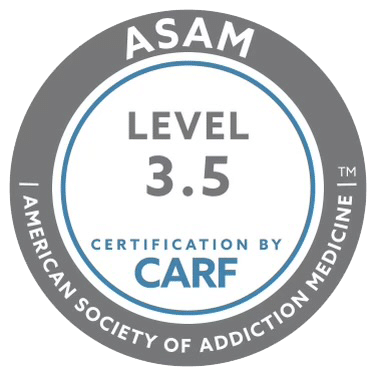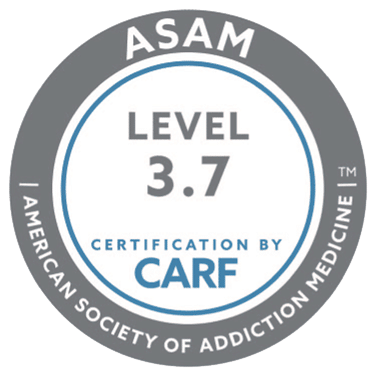Tolerance builds up quickly with powerful opiates such as fentanyl. After a while of use, a person starts needing a higher dosage to achieve the same effect, leading to fentanyl misuse and dependence.
Primarily, understanding the importance of fentanyl detox is vital, whether you or someone you know is dealing with addiction. Moreover, it’s crucial to be aware of the symptoms accompanying the medicine’s withdrawal.
In this article, we go over everything you need to know about fentanyl, its dangers, and the signs showing fentanyl dependence. In addition, we explore how the detox process goes and what to expect from it. So, keep reading.
Understanding Fentanyl
Fentanyl is an FDA-approved synthetic opiate similar to morphine but about 50—100 times more potent.

In general, this drug is especially useful in cases of post-surgery, chronic, or cancer-related pains. On top of that, fentanyl can also be helpful as an anesthetic agent during surgical procedures.
What makes such a medicine controversial is its rapid effectiveness, which aids a lot in making patients comfortable during surgery.
Additionally, doctors usually use it in palliative care because it’s a strong pain reliever. This means it works greatly in improving the quality of life for terminally ill patients.
Illicitly Manufactured Fentanyl
Recently, fentanyl has been illegally made and sold by drug dealers around the US for its effects similar to heroin’s. Often mixed with cocaine or heroin, illicitly manufactured fentanyl increases the euphoric effects of drugs, which poses a severe threat to public health and safety.
According to the National Center for Drug Abuse Statistics, opioids are responsible for seven out of every ten overdose deaths in the US.
The Dangers of Fentanyl
While fentanyl is highly useful and precise in medical settings, its illicit use is quite dangerous.
That’s why one of the most concerning aspects of it is the fine line between a therapeutic dose and a fatal overdose. With a simple miscalculation, a person can end up having a life-threatening overdose.
Side Effects and Long-Term Impacts of Fentanyl Abuse
The dangers of fentanyl don’t only display as a deadly overdose. Instead, they extend beyond that point. In general, prolonged and uncontrolled fentanyl abuse may lead to a range of side effects and long-term consequences.
Fentanyl’s constant use has immediate side effects, including drowsiness, confusion, constipation, nausea, and impaired coordination. Moreover, the drug’s depressive effects on the nervous system may cause respiratory issues.
Furthermore, fentanyl misuse might result in significant cognitive impairment, impacting memory as well as one’s decision-making abilities. Plus, prolonged consumption is often associated with deteriorating health, compromised immune function, and damage to vital organs.

Recognizing the Signs of Fentanyl Dependence
As profound as its potency is, fentanyl is a narcotic pain reliever that comes with an incredibly high risk of abuse. The signs of the drug’s misuse vary to include physical symptoms as well as behavioral changes, including:
- Increased Tolerance: Over time, a person who misuses this drug requires higher and higher doses to get the same effect.
- Difficulty To Quit: While an individual may be fully aware of the drug’s negative consequences, breaking free remains challenging.
- Declining Performance: Dependence on fentanyl can lead to a decreased ability to fulfill daily responsibilities. A person usually starts to neglect work, school, family obligations, etc.
- Social Withdrawal: People with fentanyl dependence may withdraw from social activities and relationships that were once valuable to them. Instead, they focus mainly on obtaining and using the drug.
- Physical Changes: Oftentimes, fentanyl dependence leads to noticeable physical changes eventually. These changes include weight loss, constricted pupils, insomnia, etc.
Fentanyl Withdrawal: What To Expect
When a person’s body gets used to fentanyl, it starts exhibiting withdrawal symptoms soon after trying to quit. There’s no doubt that it’s an uncomfortable process, both physically and psychologically.
Timeline of Withdrawal Symptoms
The timeline of fentanyl withdrawal symptoms typically follows a predictable course. Yet, the severity and duration may vary from one person to the other.
That said, you can break down the timeline into three main stages, which are:
- Early Symptoms: Anxiety, chills, discomfort, muscle aches, etc. (8 to 36 hours after last use).
- Peak Symptoms: Nausea, vomiting, intense cravings, diarrhea, sweating, and abdominal cramps (within 72 hours).
- Extended Symptoms: Although the severity of symptoms starts to decline, most people continue to experience them. From anxiety to fatigue, depression, and mood swings, some of these feelings may continue for weeks.
Physical and psychological Manifestation of Fentanyl Withdrawal
Fentanyl withdrawal symptoms manifest themselves physically and psychologically. Generally, they include:
- Physical pain that feels like deep aches throughout the body.
- Difficulty falling and staying asleep.
- Emotional fluctuations, from anxiety and agitation to sadness and irritability.
- Clinical depression due to changes in brain chemistry.
- Gastrointestinal distress from nausea to vomiting and diarrhea.
- Elevated blood pressure (hypertension) and increased heart rate (tachycardia).

The Fentanyl Detox Process
Fentanyl detox is a process that requires medical supervision to ensure the patient’s well-being. Typically, it follows these three key steps.
Step #1: Medical Assessment
The process begins with a complete medical assessment conducted by healthcare specialists. It’s an essential step to measure the severity of the case and determine the best course of treatment.
Normally, drug detox is better to be performed under medical supervision within a specialized treatment facility. Not only does it ensure the patient’s safety, but it also guarantees overcoming the uncomfortable symptoms as quickly as possible.
Step #2: Medically Assisted Detox
In many cases, Medication-Assisted Treatment is a must for fentanyl detox. Primarily, it involves the use of particular medications to alleviate withdrawal symptoms and minimize cravings.
In other cases, doctors may choose to employ a controlled tapering process. This means they decrease the patient’s fentanyl dose gradually over time to make the experience more tolerable.
Step #3: Monitoring and Support
Monitoring through the fentanyl detox process ensures a patient’s safety in case of any complications or severe symptoms. In addition, many facilities offer emotional support through counseling and therapy if needed.
Detoxing Without Medical Supervision
Attempting to detox from fentanyl without medical supervision isn’t recommended and can be dangerous for several reasons, including:
- The high risk of relapse due to the intensity of withdrawal symptoms.
- Vulnerability to malnutrition and dehydration as a result of the drastic gastrointestinal symptoms.
- The severity of the psychological symptoms that often require professional intervention.
- Difficulties to address some medical complications without the help of healthcare professionals
- Lack of medical supervision that helps with administering medications and providing support.

Post-Detox: The Importance of Comprehensive Treatment
Fentanyl detox is just an initial step on the long way to full recovery. However, it’s not a conclusive solution for long-term sobriety. After all, it only addresses the physical aspect of addiction by managing withdrawal symptoms.
Nonetheless, the main cause of addiction (psychological and behavioral aspects) still needs attention. That’s when behavioral therapy and counseling come in handy.
Primarily, therapeutic interventions help people understand and change the patterns leading them to addiction. Among the most successful techniques used are cognitive-behavioral therapy (CBT), dialectical-behavior therapy (DBT), and motivational interviewing.
Furthermore, it’s crucial not to ignore the importance of an aftercare plan to maintain sobriety. This includes ongoing therapy, regular check-ins, and relapse prevention strategies.
Challenges in Fentanyl Detox and Treatment
The journey through the fentanyl detox process is long and tiresome for the patients as well as their families. Generally, the most notable challenges in such a treatment process are:
- The stigma surrounding substance abuse usually acts as a block on the patient’s way of seeking help.
- Addiction treatment (especially in-patient programs) can be quite costly.
- Low accessibility of treatment centers in rural areas.
- The negative social and environmental influences.
- The low quality of treatment in some facilities.
Conclusion
Fentanyl detox is a challenging process indeed. However, it’s essential to understand the importance of a comprehensive treatment plan for fentanyl dependence, addressing both the physical and psychological aspects.
So, if you or someone you care about are struggling with drug addiction, don’t hesitate to seek help. Some types of substance misuse are best treated under medical supervision to ensure complete recovery.







